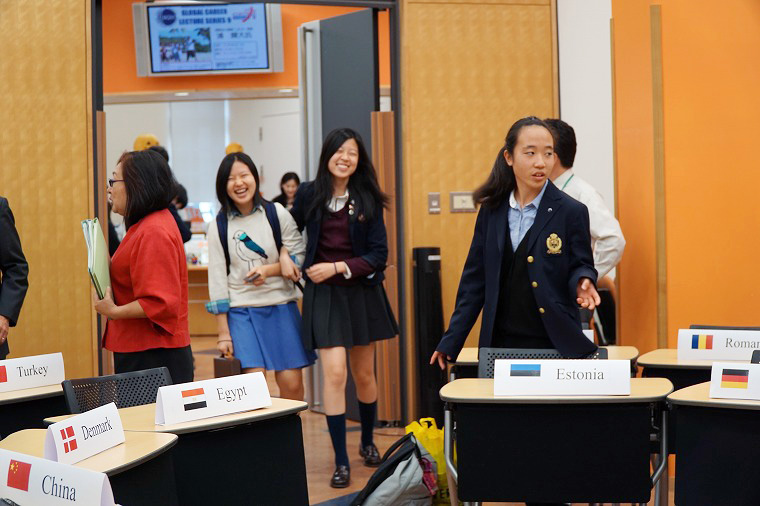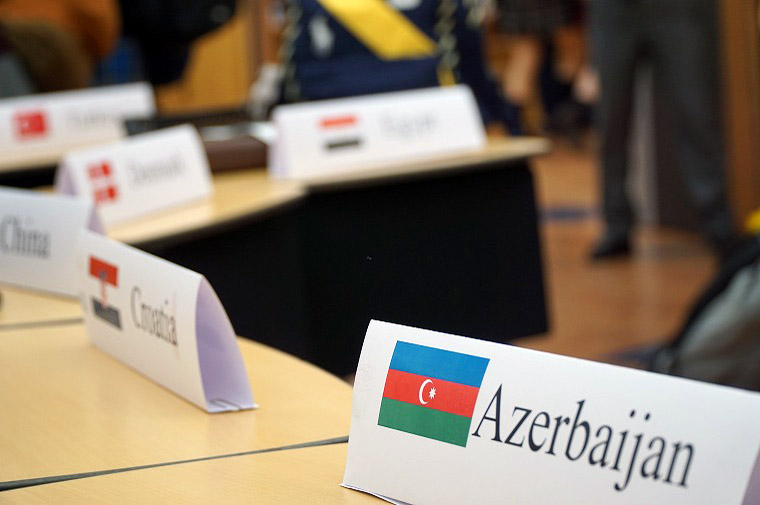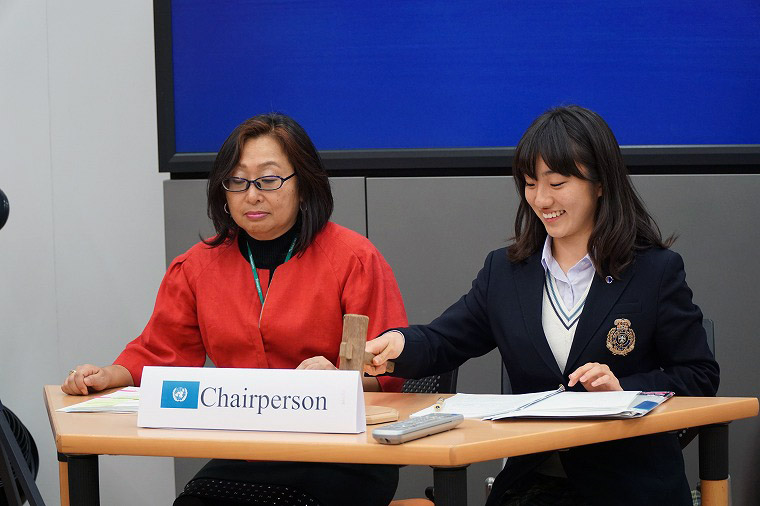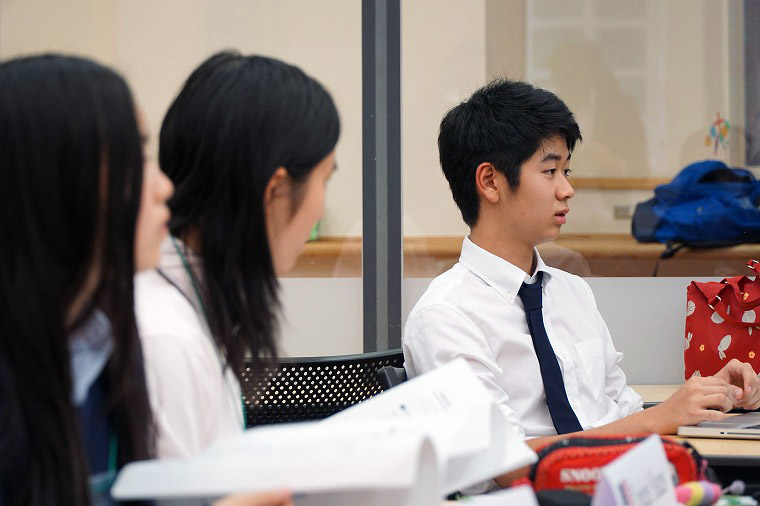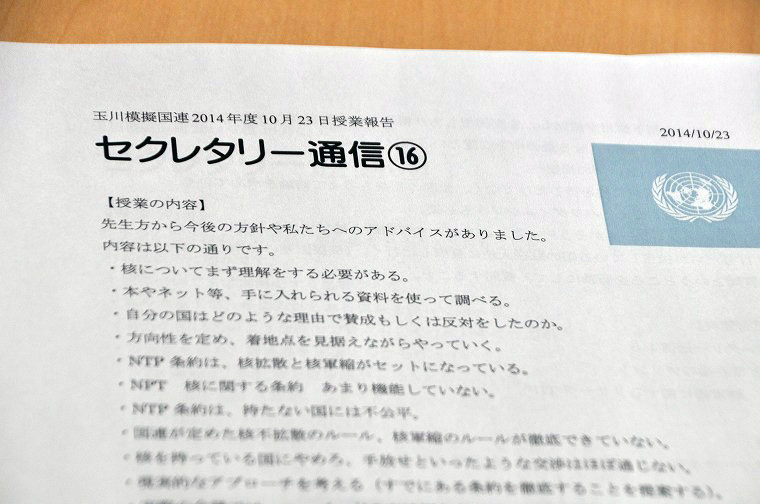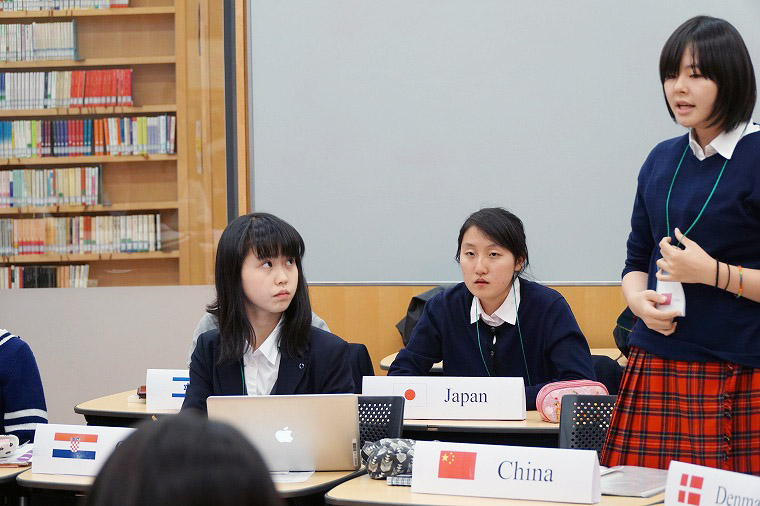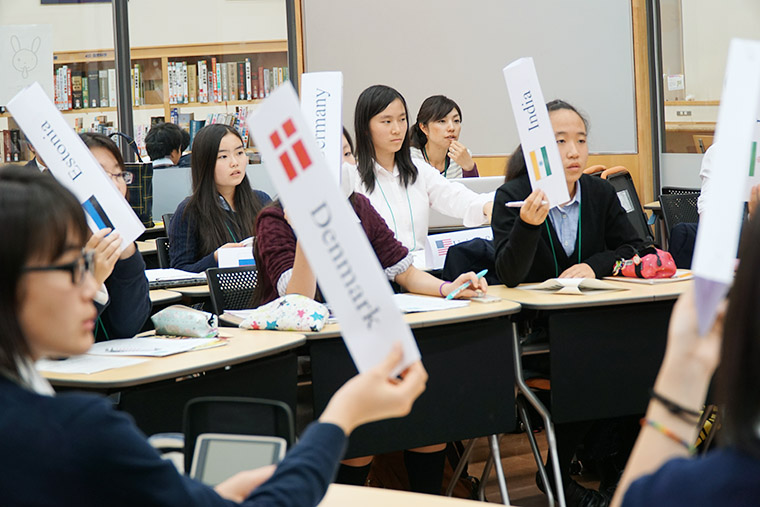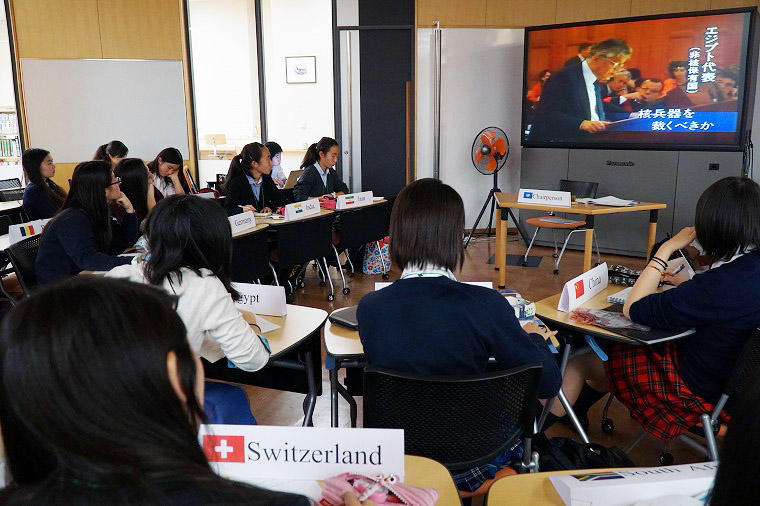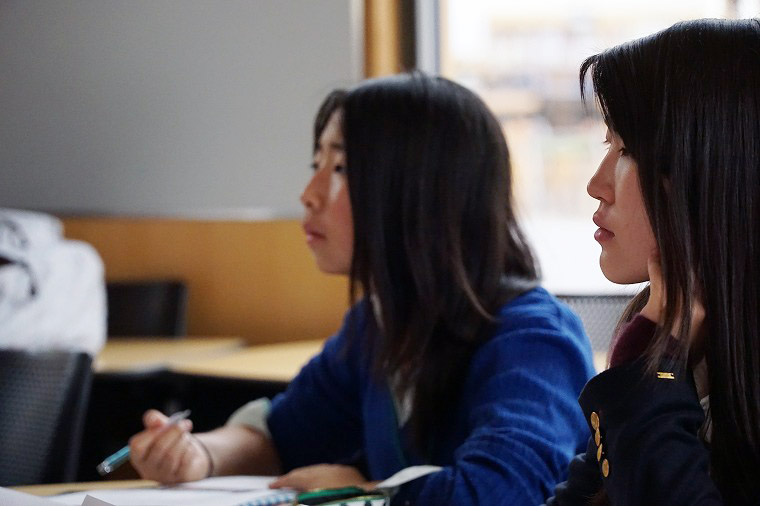Following the established UN conference methods, the series of Model United Nations assemblies at Tamagawa Academy are held in seventh period on Thursdays, which is a part of the SGH comprehensive study program focusing on the following themes: poverty, human rights, the environment, leadership and international cooperation.
Since this April, 21 grade 10, 11and 12 students have been taking this course. Since the middle of September the 10th and 11th graders have been leading the activities.
In the model United Nations each student selects a country, and acting as the representative of it they speak, negotiate and promote discussion. In the classroom, desks, having a country’s nameplate on them, are arranged in a semicircle. The chairperson sits in the center, and the secretary sits to her or his right.
The teacher supports the chairperson and secretary who are newly appointed. The chairperson conducts the conference only in English. The copies of the conference minutes that the secretary takes are given out as a reference in the next class.
The students can use both Japanese and English, and they decide on their own what and how they will present after hearing other students’ opinions. “Until now I only know about my own country. So I’d like to know more about other countries too. Let’s teach each other about our countries?” The countries that agree with this suggestion signal approval by raising their nameplate. They decided that each country will present the resolution they want to adopt in the next class. Also, they discussed the language in which they will make the presentation, and decided that the handouts should be written in both Japanese and English, and the presentations should be delivered in Japanese.
At this point, they have completed two topics and are now discussing “nuclear disarmament.” Up until the previous topic, the students were assigned to work in pairs. From this topic they will work on their own. They will need time to research about the situations and problems in their own countries and about the relations with other countries.
As a reference, they watched a documentary video following the history of the Legality of the Threat or Use of Nuclear Weapons, which is an advisory opinion by the International Court of Justice. They recognized the need for higher levels of communication from the video like what a country should or should not say and how negotiation must work.
To think about a topic from different positions and points of view leads to various discoveries. In the next topic about negotiation between countries, the students have to walk around the classroom interacting and negotiating with the other students.
A larger conference will be held next February in which students who live in other prefectures such as Nara and Hiroshima will take part too. The students at Tamagawa Academy are expected to grow through their exchanges with other school students.





